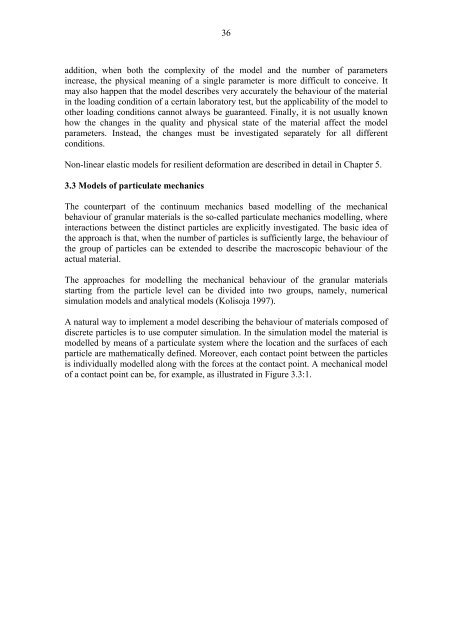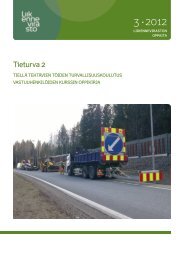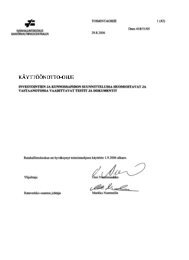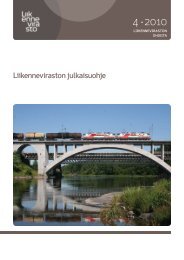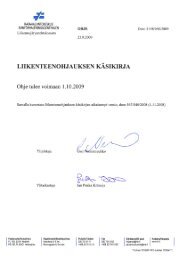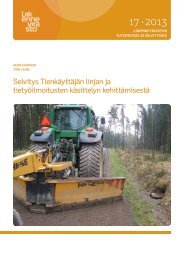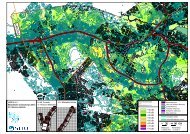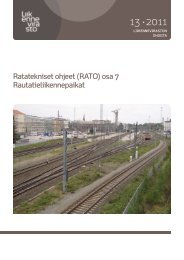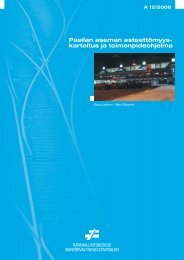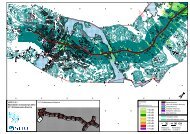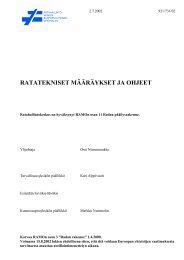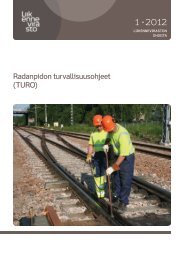Deformation behaviour of railway embankment ... - Liikennevirasto
Deformation behaviour of railway embankment ... - Liikennevirasto
Deformation behaviour of railway embankment ... - Liikennevirasto
You also want an ePaper? Increase the reach of your titles
YUMPU automatically turns print PDFs into web optimized ePapers that Google loves.
36<br />
addition, when both the complexity <strong>of</strong> the model and the number <strong>of</strong> parameters<br />
increase, the physical meaning <strong>of</strong> a single parameter is more difficult to conceive. It<br />
may also happen that the model describes very accurately the <strong>behaviour</strong> <strong>of</strong> the material<br />
in the loading condition <strong>of</strong> a certain laboratory test, but the applicability <strong>of</strong> the model to<br />
other loading conditions cannot always be guaranteed. Finally, it is not usually known<br />
how the changes in the quality and physical state <strong>of</strong> the material affect the model<br />
parameters. Instead, the changes must be investigated separately for all different<br />
conditions.<br />
Non-linear elastic models for resilient deformation are described in detail in Chapter 5.<br />
3.3 Models <strong>of</strong> particulate mechanics<br />
The counterpart <strong>of</strong> the continuum mechanics based modelling <strong>of</strong> the mechanical<br />
<strong>behaviour</strong> <strong>of</strong> granular materials is the so-called particulate mechanics modelling, where<br />
interactions between the distinct particles are explicitly investigated. The basic idea <strong>of</strong><br />
the approach is that, when the number <strong>of</strong> particles is sufficiently large, the <strong>behaviour</strong> <strong>of</strong><br />
the group <strong>of</strong> particles can be extended to describe the macroscopic <strong>behaviour</strong> <strong>of</strong> the<br />
actual material.<br />
The approaches for modelling the mechanical <strong>behaviour</strong> <strong>of</strong> the granular materials<br />
starting from the particle level can be divided into two groups, namely, numerical<br />
simulation models and analytical models (Kolisoja 1997).<br />
A natural way to implement a model describing the <strong>behaviour</strong> <strong>of</strong> materials composed <strong>of</strong><br />
discrete particles is to use computer simulation. In the simulation model the material is<br />
modelled by means <strong>of</strong> a particulate system where the location and the surfaces <strong>of</strong> each<br />
particle are mathematically defined. Moreover, each contact point between the particles<br />
is individually modelled along with the forces at the contact point. A mechanical model<br />
<strong>of</strong> a contact point can be, for example, as illustrated in Figure 3.3:1.


